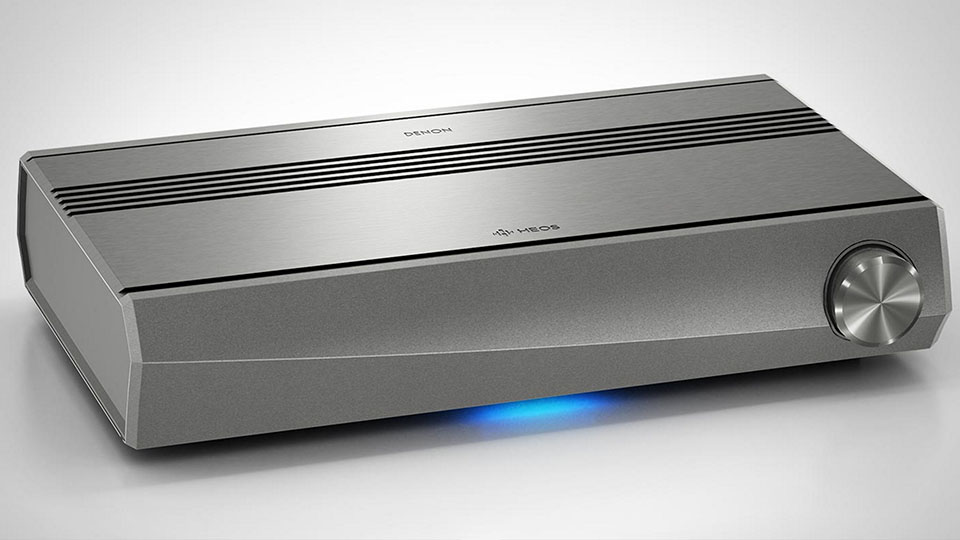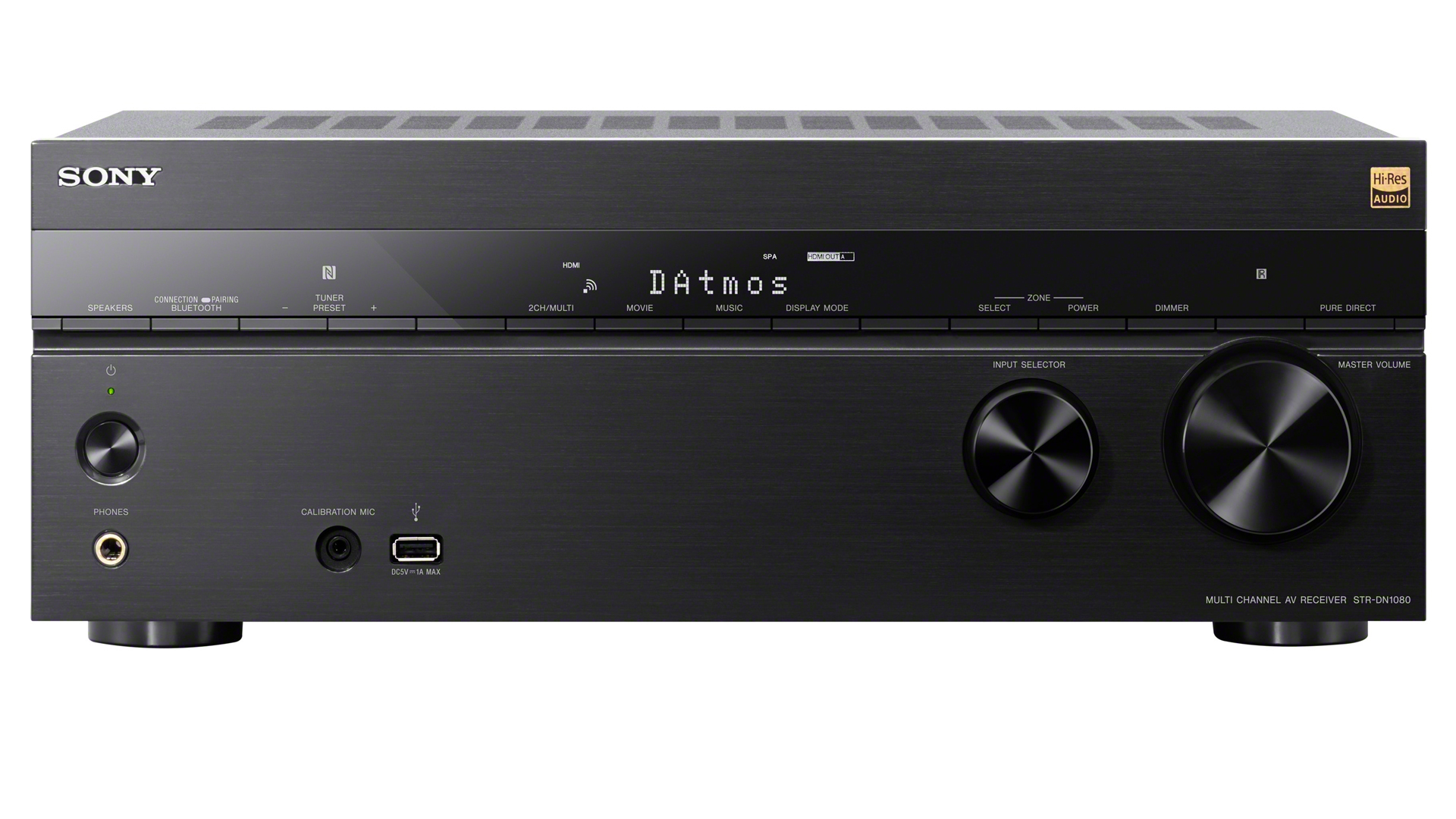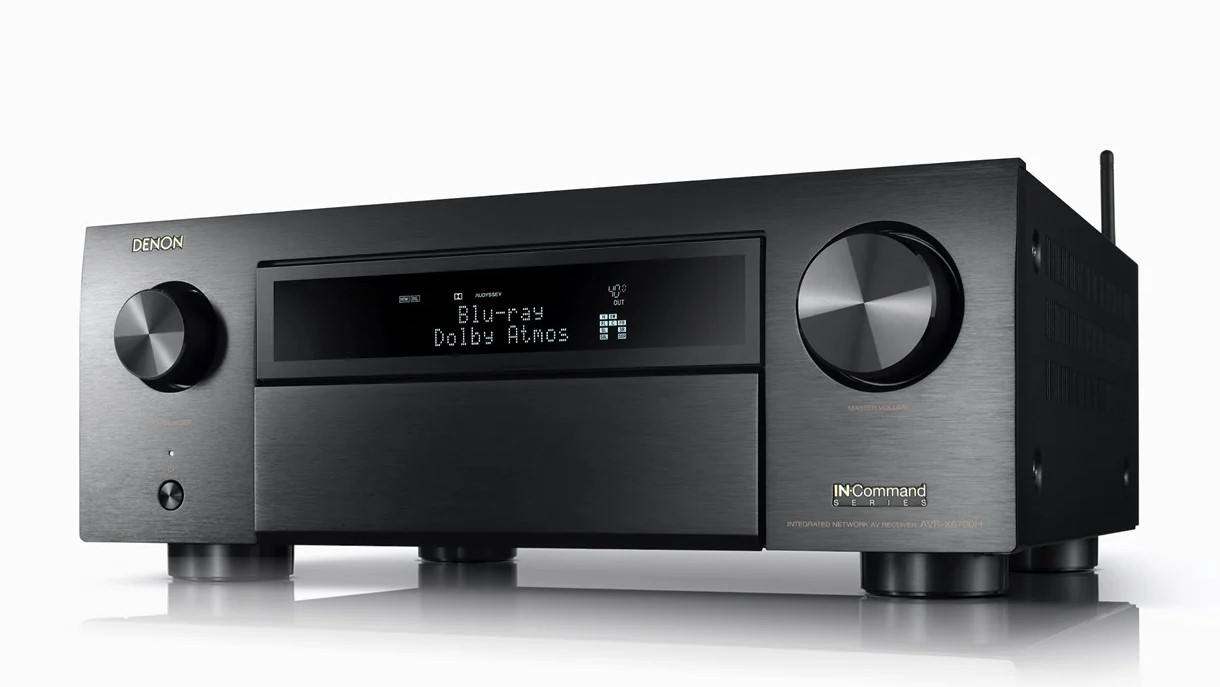Best AV receivers 2021: which home cinema AV receiver should you buy?
Buying one of the best AV receivers of 2021 is an excellent decision if you want to transform your humble entertainment set-up into your own personal home theater system. We like to think of an AV receiver as a home entertainment hub, which will ensure you get the best possible audio and video possible from the devices you already have.
With that in mind, if you want the best entertainment experience, an AV receiver is important. Buying one of the best TVs on the market allows you to bring that huge cinema screen feel to your home, but it far too often won’t be able to deliver the audio you need to match it. What’s the answer? To get the high-end sound that truly makes the most of your 4K TV, you'll need to buy yourself an AV receiver.
But wait, what really is an AV receiver? Good question. It might sound like complex audio equipment, but an AV receiver is really just a much way to better control your AV setup. AV receivers are able to take the audio track from whatever TV show, movie, CD, or video game you're watching or listening to and then process the audio and send it through to any connected speakers you have.
- Best surround sound systems: how to get truly cinematic audio in your home
- Check out our comprehensive guide to Bluetooth speakers
Importantly, AV receivers (which are also known as AVRs) don’t just improve sound. They are also the only way to power 5.1 and 7.1 speaker setups outside of a soundbar, and they can also host a wide range of ports, which allows you to keep all of your devices connected all of the time.
This is essential, because you should think of the best AV receivers as the central hub that all of your entertainment equipment will connect to and communicate with in order to bring you the best possible experience.
Even if you have a whole host of other devices, the best AV receivers mean that the transition between them can be seamless. That means, regardless of what it is you’re trying to play, watch or listen to, you’ll always get an amazing entertainment experience to (just about) rival your nearest cinema screen.
8K AV receivers are now also entering the market too. That means if you own or you’re thinking of upgrading to an 8K TV, you might want to check out the 8K-capable AVR from Denon or Yamaha, especially for use alongside the latest gaming consoles, like the PS5 or Xbox Series X. We'll update this guide once some of these 8K models have been through our tests, too.
On a budget

It’s not often we see something radically different in the world of AV receivers, but this HEOS model definitely qualifies. For starters, it looks fundamentally different to the herd. There’s no front panel display. Rear connectivity has also been stripped back. Standing just 90mm tall, it’s refreshing compact.
Build quality is superb. Only a volume knob on the extruded aluminum fascia gives the AVR game away.
There are four HDMI inputs, and a single output, all with HDCP 2.2 support. There's just two digital audio inputs (coaxial and optical), plus analogue stereo, 3.5mm minijack, lone USB and Ethernet LAN. Wireless connectivity covers Bluetooth and Wi-Fi.
Perhaps surprisingly, this is a 5.1 channel design and doesn’t support Dolby Atmos. Key to the receiver’s appeal is HEOS wireless speaker integration. While there is provision for wired rear speakers, the system is designed to work with wireless HEOS rears. In most systems, only the front L/C/R will be tethered. It can also partner with a dedicated wireless HEOS subwoofer.
While a remote is supplied, it’s a basic zapper. There’s no onscreen display either. Setup and control is done through a HEOS app.
For our audition, we partnered the AVR with a pair of HEOS 1s at the rear, and the wireless HEOS subwoofer. With speakers grouped, the package becomes a working 5.1 system. There’s no further calibration required.
The HEOS AVR may not be a powerhouse, but it’s a bright, lively listen. The receiver delivers multichannel movie soundtracks with gusto. It’s crisp and exciting, particularly when there’s plenty going on around the soundstage (try it with Edge of Tomorrow Blu-ray, then duck as the DTS HD Master Audio soundtrack unloads chaos in every corner).
This isn’t a particularly musical AVR though. Pop and rock are entertaining enough, but throw a throw it something classical or jazzy and its spatial delineation turns a bit mushy.
Using wireless rears can invite some problems. While latency isn’t an issue, we were aware of occasional low-level pops and fizzes.
As an ambitious reworking of the classic home theater receiver, we rate this first HEOS AVR as an qualified success. The cosmetics are admirable, and for dedicated HEOS multi room users the wireless interactivity is a boon. Employing an app for control seems to make perfect sense, the only snag comes if your streaming audio sources are also app controlled and need to be juggled outside of the HEOS app. This may not be the future of AV receivers, but it’s a refreshing rethink nonetheless.


It might be late to the party, but Sony’s debut Dolby Atmos AV receiver entertains with some cool functionality. While it’s ostensibly a seven channel design (which means it can run in a 5.1.2 Dolby Atmos configuration) there are also two phantom rears which create a pseudo seven channel surround soundstage. The receiver can even virtually relocate the physical position of your speakers, to create a better sonic balance.
Build quality is commensurate with its price tag. This is no heavyweight, and the fascia looks overly fussy, but the hairline finish is a premium touch. Connectivity is good. We get six HDMI inputs, all HDCP 2.2 enabled. There are also two HDMI outputs, for combi TV and projector use. There are also two analogue AV inputs, plus a pair of stereo phonos and two digital audio inputs.
The AVR connects via Ethernet or Wi-Fi, and Bluetooth with NFC for quick pairing, plus Airplay. The AVR also boasts Chromecast Built-in. That’s all the main wireless boxes ticked.
Setup is helped along by the latest iteration of Sony’s Auto Calibration software, which now features a 31-band graphic EQ and a stereo calibration microphone that adjusts phase, distance and level.
Usability is average. The receiver relies heavily on its UI, which is pretty but sometimes a little frustrating.
Performance is excellent for the price. Tonally the STR-DN1080 may not be particularly warm, but it is exciting. Movies benefit from seamless panning and pronounced dynamics. Power output is quoted at 7 x 165W into 6 ohms. The biggest surprise is the effectiveness of the phantom rears, which really do help fill out the rear surround stage. This sonic trickery positions the STR-DN1080 somewhere above a standard 5.1.2 design, but below a true nine channel amp.
Overall, this is an innovative, exciting AV Dolby Atmos receiver. Consider it a brilliant value home cinema offering.
Mid-range AV receivers

There's very little we can hold against the Denon AVR-X2700H, one of the world's first 8K receivers and winner of a number of accolades this year. It's what we consider the best overall AV receiver in 2021 in terms of what it offers for the money.
What Denon's entry-level 8K AVR brings to the table is an incredible feature set comprising of Variable Refresh Rate (VRR), Quick Frame Transport (QFT), and Auto Low Latency Mode (ALLM) on each of the HDMI-In ports, plus support for HDR10+, HDR10, HLG and Dolby Vision forms of HDR. For the exceptionally stringent viewers out there, the AVR-X2700H also supports IMAX Enhanced, too.
In terms of audio formats, Dolby Atmos Height Virtualization, Atmos, DTS:X and DTS Virtual:X are all present and accounted for, plus with eARC support, you don't have to juggle multiple remotes. Of course, if you want to go remote-free there is voice support for Alexa, Google Assistant and Siri-enabled devices, making it truly egalitarian. It's a futureproof AVR and a great value especially at under $1,000.
Read more: Denon AVR-X2700H revealed
When money's no object

For most cinephiles out there, the Denon AVR-X6700H is going to be the best AVR money can buy. Sure, there are more expensive amps out there with a few superfluous bells and whistles, but the AVR-X6700H gives you 140W-per-channel amplification with all the essentials you need to keep your speakers sounding great.
Like the lower-cost the AVR-X2700H, the higher-end model supports Dolby Atmos Height Virtualization, Atmos, DTS:X and DTS Virtual:X are all present and accounted for, plus with eARC support, but you can also add DTS:X Pro to that list when it comes via a firmware update in 2021.
On the visual side, the AVR-X6700H does 8K upscaling unlike anyone else right now, as well as HDCP 2.3, the highest format available that can play copy-prohibited content without a problem. For HDR support, all the main players are here: HDR10+, HDR10, HLG and Dolby Vision.
It's a rock-solid AVR and while it's expensive, it absolutely delivers exceptional clarity, soundstage and presence to your favorite films and music, and is pretty much the pinnacle of what you can expect from a cutting-edge AVR.

While the Arcam AVR850 is unlikely to win any Best Value accolades – it’s unashamedly expensive for a 5.1.2 Dolby Atmos design – its overarching musicality is hard to beat. This is arguably the UK audio specialist’s best sounding AV receiver to date.
The AVR850 uses Class G power amps, conservatively rated at 100W-per-channel.
The design is understated, with a nice matte cabinet finish and big central volume knob. It tips the scales at a reassuringly heavy 16kg.
Connectivity is good. There are seven HDMI inputs, all with HDCP 2.2 support, plus three HDMI outputs. Audio options include six analogue inputs, and six digital audio inputs.
The really significant difference here, compared to previous Arcam home theater boxes, is the provision of Dirac Live room calibration.
Arguably the most sophisticated auto calibration technology available, it does a extraordinary job fine tuning the receiver to the listening room. Dirac tuning is not carried out by the receiver with a microphone, but via a laptop. Sounds complicated? Don’t fret. Buyers will have room calibration done by the dealer that supplies the receiver.
While Dirac is the height of sophistication, the user interface is pretty basic, just a plain text box. Arcam isn’t even trying to impress here.
Still, the receiver sounds sensational, with precise imaging that really makes the most of Dolby Atmos encoding. It’s tight and forceful with action sequences, and delicious melodious with two channel music. That feature count may look frugal for the price, but when it comes to performance, your investment will be repaid in spades.
The Arcam AV850 may be ruinously expensive for a seven channel amplifier, but tuned with Dirac, it’s clearly a premium performer. We’re prepared to forgive it any foibles.
Choosing your AV reciever
How to choose the best AV receiver for you
There are lots of speaker styles to choose from – that's why we've put together lots of guides on the best speakers you can buy in 2021.
Looking for some Hi-Res audiophile speakers to go with your record player? Check out the best stereo speakers. Bored of your TV's lackluster audio? Try one of our best soundbars on for size.
If you need a speaker you can take everywhere, make sure you look at the best waterproof speakers.
For total control of your smart home, invest in one of the best smart speakers, which come with Google Assistant, Amazon Alexa, or Siri built-in.
If you have a 4K set-up at home, then you need to be on the lookout for a receiver that has a wealth of HDCP 2.2 compatible HDMI ports. If you want to get really high-tech with your set-up, and invest in multi-room streaming, you need to think about which wireless speaker system is best for you – Chromecast, Heos, or even Yamaha MusicCast. Even if that's not something you're interested in right now, it makes sense to future-proof your set-up.
For many people, Dolby Atmos will be the killer app. This 3D audio system is now the gold standard in immersive audio. It may be available on soundbars, but only an AV receiver offers true overhead Dolby Atmos audio.
All you'll need to do is decide if you want a seven or a nine-channel system. (However, that said, you may not need Dolby Atmos at all, in which case a standard 5.1 sound system will fill your surround sound needs nicely.)
Have we convinced you that you need an AV receiver yet? The next step is figuring out which is the right one for you and luckily we've got a big list of all the best AV receivers you can get your hands on today.
Original reporting in this article was by Steve May.
- Want a cheaper audio solution? Try one of our best soundbars
Today's best AV receiver deals
Contributer : Techradar - All the latest technology news https://ift.tt/3iuKNTW

 Reviewed by mimisabreena
on
Tuesday, August 17, 2021
Rating:
Reviewed by mimisabreena
on
Tuesday, August 17, 2021
Rating:















No comments:
Post a Comment